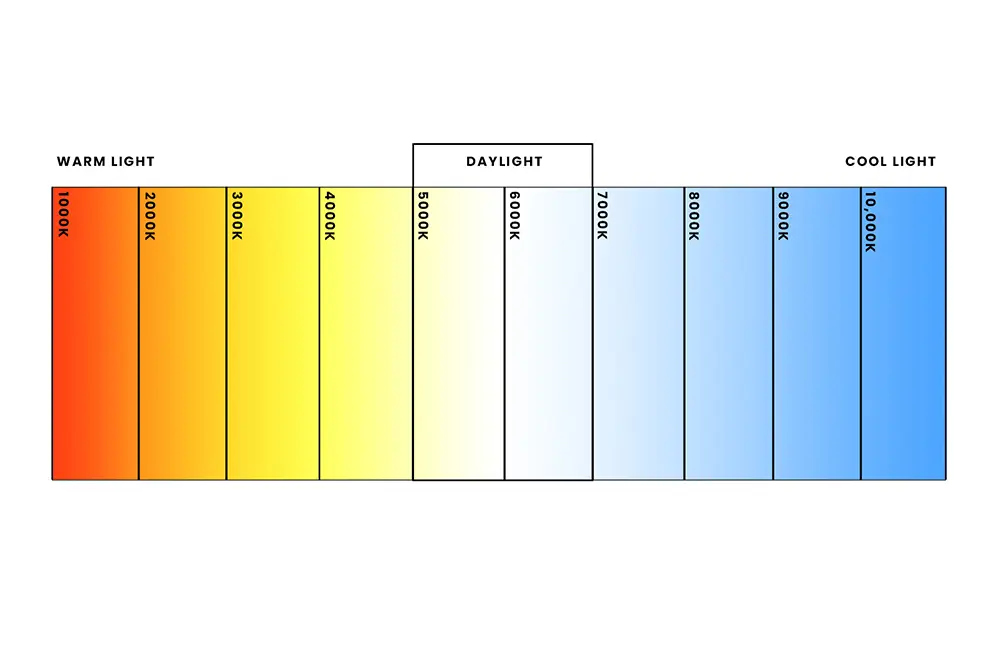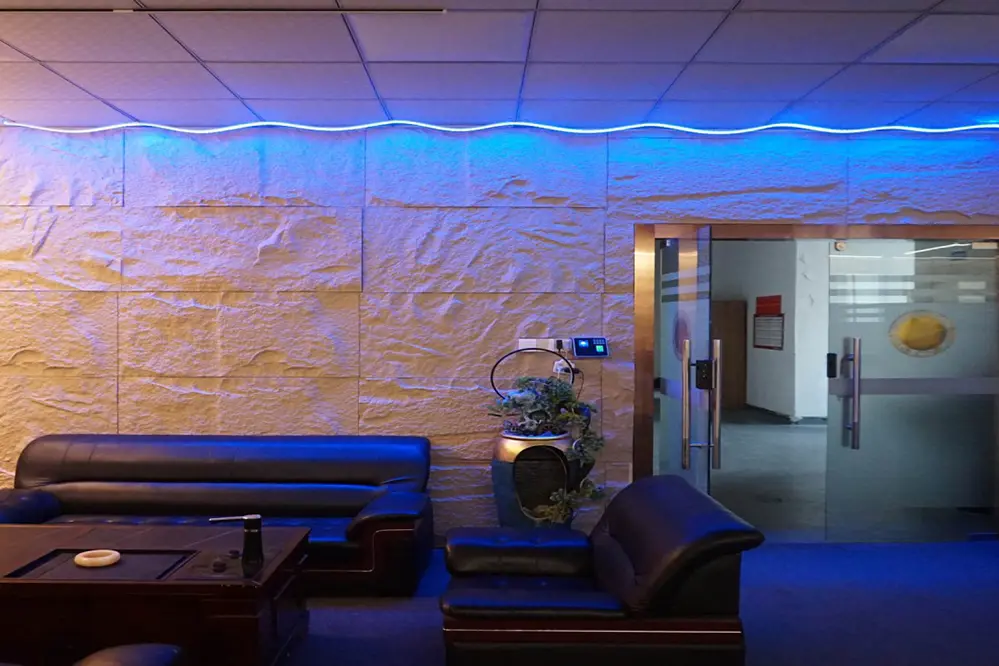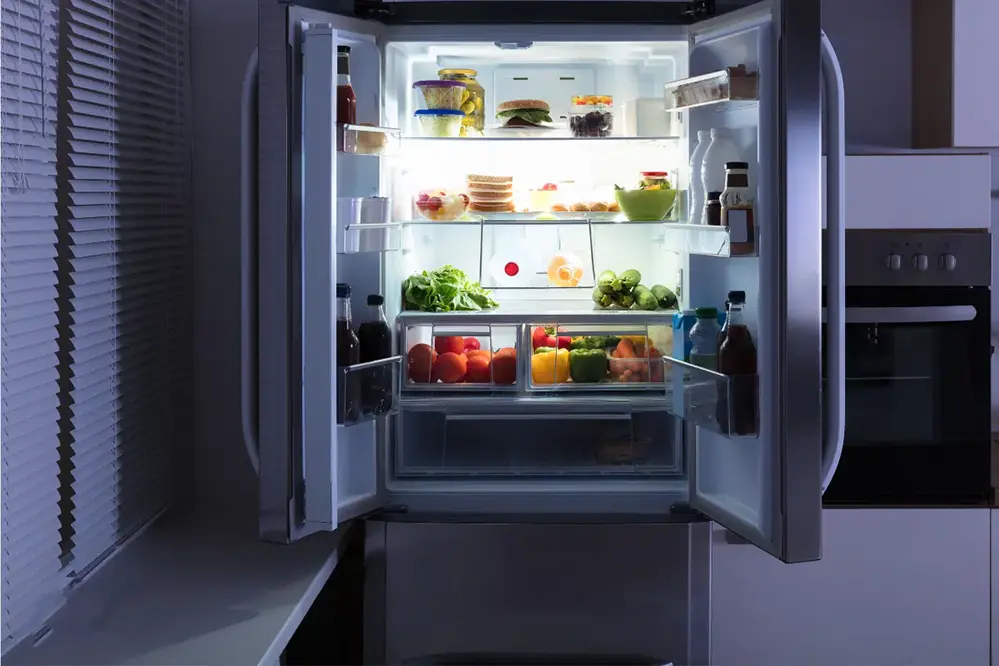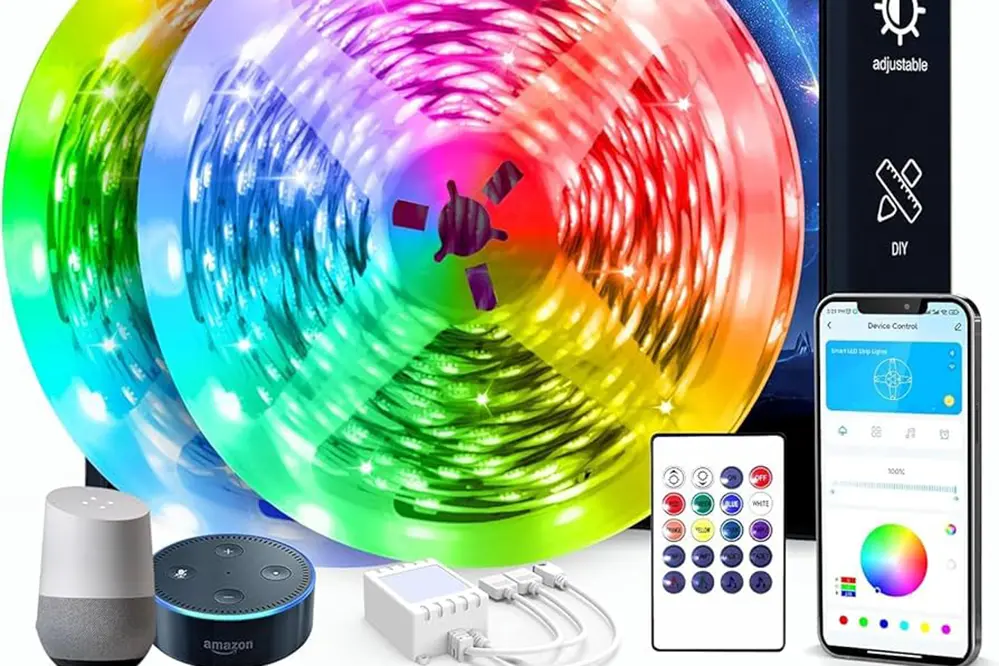Welcome to our comprehensive guide on understanding color temperature in lighting! Whether you’re a lighting enthusiast or a seasoned professional in the industry, this blog post is here to shed light on the fascinating world of color temperature and its significance in LED lighting. So, grab a cup of coffee, sit back, and let’s embark on a journey that will illuminate your understanding of this essential aspect of lighting design.
In the realm of lighting, color temperature plays a pivotal role in creating the perfect ambiance and setting the mood. But what exactly is color temperature? It refers to the color appearance of light emitted by a source, and it is measured in Kelvin (K). Understanding color temperature is crucial because it can greatly impact the way we perceive and experience our surroundings. From warm and cozy hues to cool and vibrant tones, the right color temperature can transform any space into a captivating oasis.
Now, let me introduce myself. I’m Tom, and I’ve been immersed in the LED lighting industry since 2005. Over the years, I’ve witnessed the remarkable advancements in LED technology and have gained a wealth of knowledge and expertise in this field. Drawing from my experience and passion for lighting, I’ve meticulously crafted this blog post to provide you with valuable insights and practical tips on color temperature in LED lighting. So, rest assured that you’re in capable hands as we delve into the intricacies of this fascinating subject.
Are you ready to uncover the secrets behind color temperature and its impact on your lighting choices? Let’s dive right in! Together, we’ll explore the different color temperature ranges, learn how to check the color temperature of LED lights, and unravel the difference between Kelvin and lumens. By the end of this guide, you’ll have a comprehensive understanding of color temperature, empowering you to make informed decisions when it comes to lighting your spaces. So, without further ado, let’s embark on this enlightening journey together!
Unveiling Color Temperature
Color temperature is measured in Kelvins, depicting the hue of light sources as perceived by the human eye. This metric crucially shapes the ambiance within a space, forging a specific atmosphere that can enhance or detract from a setting’s design.
At its core, the color temperature spectrum ranges from warm tones, like the amber glow of a candlelight at approximately 2000K, to cool daylight hues that exceed 6500K, mimicking the midday sun. This variance allows for meticulous manipulation of mood and environment within architectural and design paradigms.
Selecting the appropriate “Kelvin” for a space implicates more than aesthetics—it’s an ergonomic choice, influencing mood and visual acuity.
Defining Color Temperature in Lighting
Color temperature quantifies the visual warmth or coolness of a light source’s emitted spectrum.
Precise color temperature shapes our perception, affecting everything from mood to the clarity of visual tasks.
Its unit of measurement, Kelvins, serves as a guide to selecting the appropriate ambiance for various environments. This selection impacts aesthetics, mood, and even the functionality of a space, bridging the gap between mere perception and tangible experience.
Accurately choosing color temperature is an intersection of science and art, where nuanced shades of light influence the human experience within a space.
The Science Behind Kelvin Scale
The Kelvin scale quantifies the color temperature of light, measuring how warm or cool a light source appears to the human eye.
- Absolute Zero: At 0 K, a theoretical temperature, all thermal motion ceases.
- Black Body Radiator: An idealized physical body that absorbs all incident electromagnetic radiation, regardless of frequency or angle.
- Kelvin and Color Temperature: The scale is based on the color emitted by a black body radiator as it is heated.
- Correlation to Light Appearance: The temperature is inversely related to the color emitted — higher temperatures produce cooler, bluer light, while lower temperatures yield warmer, redder light.
Color temperature, denoted in Kelvins, mirrors the heat-induced color change of an ideal black body radiator.
Understanding the Kelvin scale is fundamental to manipulating the ambience and functional characteristics of lighting.
Color Temperature’s Impact on Ambiance
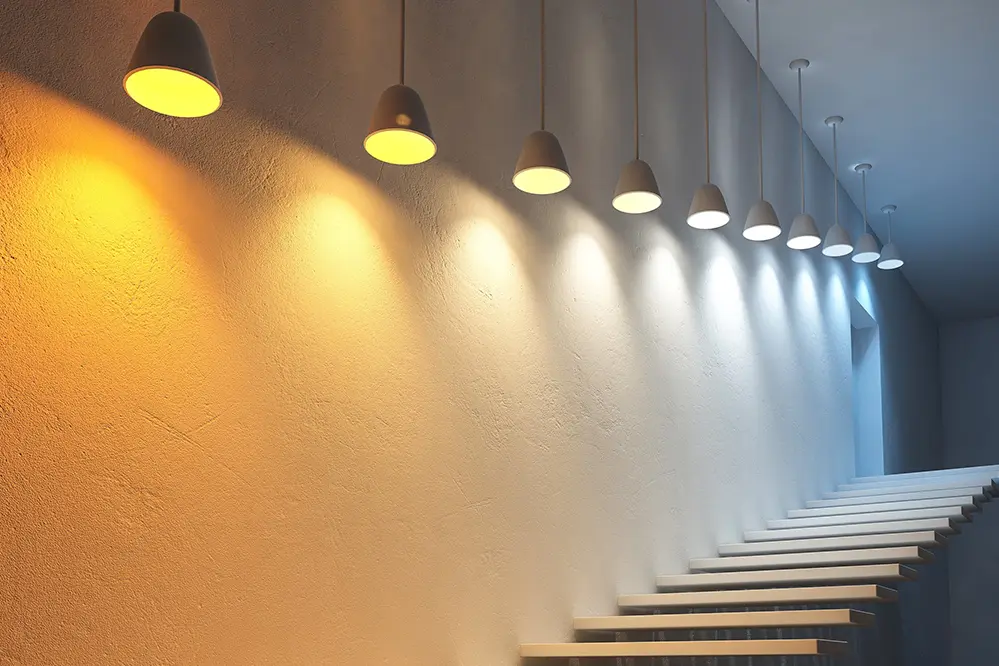
Color temperature’s subjective experience, rooted in the Kelvin scale’s objective metrics, plays a crucial role in the perceived comfort and aesthetics of an environment. Warmer temperatures, often in lower Kelvin ranges, foster a sense of coziness and relaxation, drawing parallels to the golden hues of a sunset or the soft ambience of candlelight. In contrast, cooler temperatures, featuring higher Kelvin values, are more akin to the crisp, invigorating light of a clear daylight sky, fostering concentration and alertness.
In shaping the ambiance of a space, color temperature acts as a “hidden director”. Just as the mood in a scene of a film can be altered with the use of colored lighting, different Kelvin temperatures cast distinct emotional tones within a room, quietly influencing mood and behavior. In the domain of LED lighting, with its vast array of color temperature options, the choice becomes a powerful tool in the hands of designers and homeowners alike, granting them the capacity to craft and fine-tune the psychological impact of their lit spaces.
Setting the Mood with Warm and Cool Tones
The interplay of light and shadow, crafted by careful selection of color temperature, defines the essence of a space. It does more than simply illuminate; it shapes perception and influences emotions.
Strategically placed LED lights with a warm color temperature can transform a spartan room into an inviting sanctuary, embodying the essence of hospitality. Conversely, cooler light temperatures within the same space can foster a setting of focus and precision—ideal for areas designated for study or productivity. This duality showcases the sheer power and versatility of color temperature in orchestrating an area’s overall feel.
Manipulating color temperature allows designers to accentuate architectural elements or secondary space functions. For instance, warm lighting can highlight textural details in a lounge area, while cooler lights might delineate a workspace within the same environment, effectively segmenting mood zones without physical barriers.
Finally, the juxtaposition of cool and warm tones creates dynamic spaces that can adapt to different uses and times of day. By strategically layering these tones, one can induce a transition from a vibrant daytime setting to a tranquil evening ambiance. This capacity for temporal transformation not only enhances user experience but also exemplifies the sophistication of color temperature manipulation in modern lighting design.
Optimal Ranges for Various Environments
In residential settings, warm tones ranging from 2700K to 3000K create a cozy and inviting atmosphere, conducive to relaxation and social interaction.
For commercial and retail spaces, a mid-range color temperature of 3500K to 4500K is recommended, offering a balance that is alerting yet welcoming. This spectrum encourages customer engagement, while also allowing for clear visibility of products and spaces, optimizing functionality and aesthetic appeal. Enhanced lighting strategies here can elevate user experience, subsequently impacting consumer behavior and satisfaction.
In healthcare and educational settings, temperatures around 4000K to 5000K are often utilized, as they promote concentration and alertness. The utilization of such a cooler, “daylight” range aids in performance tasks requiring focus, allowing for heightened productivity and a reduction in eyestrain during prolonged exposure.
Art galleries and studios often lean towards a neutral to a cooler range of 5000K to 6000K to ensure that colors are accurately represented and not distorted by the lighting. The ability to render colors faithfully is paramount in these settings, ensuring that the integrity of the artwork is maintained, and the intended visual experience is delivered to viewers without color bias introduced by the lighting.
Importance of Color Temperature in LED Lighting

Within the ambit of LED lighting, the concept of color temperature transcends mere aesthetic preferences; it is a critical determinant in shaping the perception and interaction with a given space. A meticulously selected color temperature can enrich the environment by enhancing mood and ambiance, fostering an emotional connection or inducing a specific psychological response. In retail scenarios, for instance, a warm color temperature might evoke a sense of welcoming comfort, potentially extending customer dwell time and affecting purchasing decisions. On the other hand, in office or industrial settings, cooler color temperatures can help maintain alertness and increase efficiency. Thus, the strategic application of color temperature in LED lighting becomes an indispensable tool in optimizing spaces for their intended purposes, affecting both functionality and human experience.
Enhancing Visual Comfort and Clarity
Visual comfort is paramount, and color temperature plays a significant role in achieving an optimal visual environment.
- Avoid High Contrast scenarios which can cause eye strain and discomfort.
- Maintain Consistency in color temperature across different lighting fixtures to prevent visual confusion.
- Choose Color Temperatures that correlate with the natural daylight cycle for better circadian rhythm alignment.
- Employ Task-Specific Lighting to provide adequate illumination where precision is required.
The right color temperature can minimize glare and improve the clarity of objects.
Implementing these strategies ensures a harmonious and visually comfortable space.
Matching LED Color Temperature to Function
Selecting the appropriate LED color temperature is fundamental for optimizing productivity and comfort in various settings. For instance, cooler temperatures can stimulate focus in a workspace, while warmer hues foster relaxation in living areas.
Spaces designed for concentration typically benefit from cooler color temperatures around 4000K to 6500K.
Areas meant for relaxation and recuperation, such as bedrooms or lounges, are best served by warmer color temperatures, generally ranging from 2700K to 3000K, which promote a calm and inviting atmosphere.
In retail and hospitality environments, the selection of color temperature is particularly crucial as it can influence customer behavior and perception of products. For instance, cooler color temperatures often enhance the visual appearance of diamonds and precious metals, while warmer tones can make wood grains and textiles appear richer and more inviting. Lighting designers must therefore exercise discernment in aligning LED color temperatures with the intended atmospheric and psychological impact desired within a space.
Measuring and Adjusting LED Color Temperature
Accurately assessing the color temperature of LEDs necessitates reliable color measurement tools such as spectrometers and colorimeters. These instruments quantify the spectral power distribution of light, allowing for precise color temperature determination.
Once measured, LED color temperature can be finely tuned using a process known as binning during manufacturing, or dynamically adjusted post-installation with color temperature changing (CCT) technology or dim to warm capabilities. This adaptability can respond to user preference or specific functional needs within a space.
The terms “color tuning” and “warm dimming” are critical in discussions surrounding the flexible modification of LED color temperature to optimize environmental ambiance.
Tools for Determining Kelvin Values
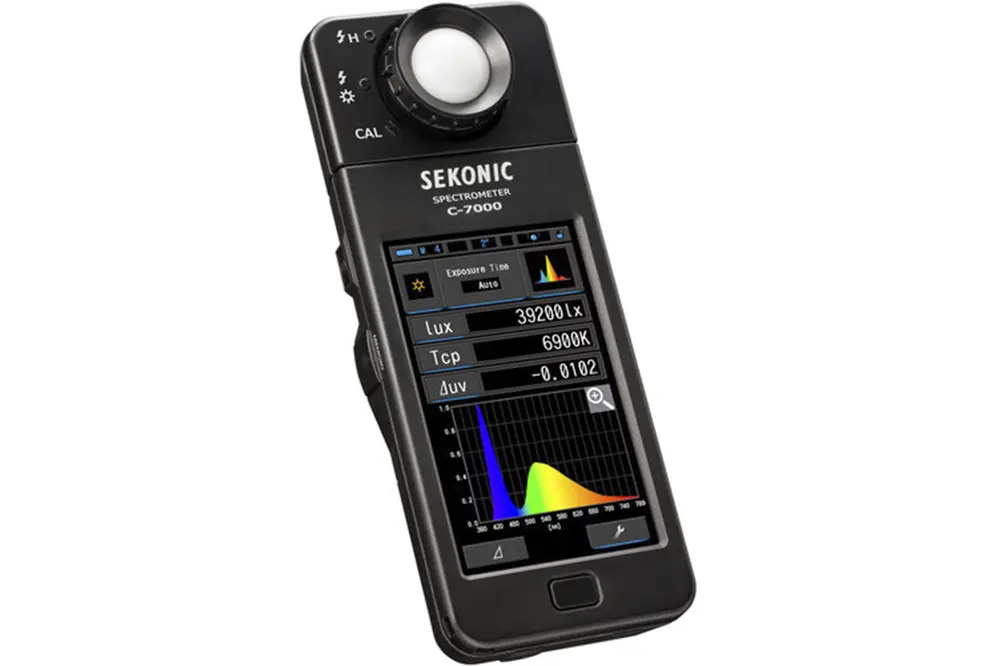
The precision of Kelvin values is crucial in achieving desired lighting effects.
- Spectrometer: A complex tool that analyzes the spectral power distribution to provide a comprehensive Kelvin reading.
- Colorimeter: Measures the intensity of color and provides color temperature values by comparing the light source to known standards.
- Lux Meter with Color Temperature Capability: While primarily used for measuring illuminance, some models offer color temperature readings.
- Smartphone Apps: Advanced mobile apps now use the phone’s camera to approximate the color temperature of light sources.
- Photographic Color Temperature Meters: Handheld devices favored by photographers to measure the color temperature in a scene promptly.
These methods range from professional-grade equipment to accessible consumer tech.
Utilizing accurate tools ensures LED installations meet both aesthetic and functional criteria.
Understanding Kelvin versus Lumens
Color temperature, measured in Kelvin, describes the visual warmth or coolness of a light source – it is not an illuminance measure. On the other hand, lumens quantify brightness.
Kelvin ratings determine the hue of light emitted, affecting the atmospheric mood of a space. Lumens measure light output, illuminating how much visible light is produced.
While Kelvin numbers convey the color impression of light, akin to the glow from red-hot metal to blue sky at noon, lumens represent the light’s intensity or effective brightness, similar to the contrast of a dim candle and a powerful floodlight.
Accurately comprehending the distinction between Kelvin and lumens is a linchpin in lighting design. Kelvin articulates the color quality of light, evoking emotions or influencing perceptions, whereas lumens are the metric of light’s utility, essential to ensuring a space is adequately lit for its intended purpose. In essence, Kelvin is about aesthetics and ambience, while lumens pertain to practical functionality and visibility.
FAQs
Is there a standard for color temperatures?
Yes, there is a standard for color temperatures in lighting. Color temperature is a measure of the color appearance of light sources and is expressed in Kelvin (K). It helps us categorize light sources based on their warmth or coolness.
The standard color temperature range for lighting is typically divided into three categories: warm, neutral, and cool. Warm temperatures have a yellowish or reddish hue and are typically in the range of 2700K to 3500K. Neutral temperatures have a more balanced and natural appearance and are usually around 4000K to 4500K. Cool temperatures have a bluish tint and are typically in the range of 5000K to 6500K.
These standard color temperature ranges provide a consistent way for lighting professionals to select the desired lighting mood or effect for different applications. For example, warm temperatures are often used in residential settings to create a cozy and welcoming atmosphere, while cool temperatures are commonly used in commercial or outdoor settings to enhance visibility and create a vibrant environment.
It’s important to note that color temperature is just one aspect of lighting design, and other factors such as the color rendering index (CRI) and the specific needs of the space should also be considered when selecting lighting. By understanding and using the standard color temperature ranges, lighting enthusiasts and professionals can make informed decisions to achieve the desired lighting effects in different settings.
How do you read a color temperature chart?
To read a color temperature chart, start by understanding the color temperature scale, typically measured in Kelvin, where higher values indicate cooler and bluer light, while lower values indicate warmer and yellower light, then match the desired color temperature with the corresponding Kelvin value on the chart to determine the recommended lighting for your specific needs.
What exactly is Kelvin?
Kelvin is the unit of measurement for color temperature.
Why is understanding Kelvin crucial in lighting?
Grasping the Kelvin scale is vital for crafting desired atmospheres. Lower Kelvin values connote warmer, yellowish hues, instrumental in cultivating cozy, inviting environments. Conversely, higher values denote cooler, bluish light that can enhance concentration and clarity in task-oriented spaces.
How does Kelvin relate to color temperature?
Kelvin directly measures the perceived color temperature of light.
What does the Kelvin number indicate in lighting?
The Kelvin number reflects the hue of the light emitted – with lower Kelvin numbers indicating warmer colors, like the comforting glow of a sunset, and higher numbers suggesting cooler colors, akin to the crispness of daylight.
Can Kelvin and lumens be seen as correlated?
No, Kelvin and lumens address different aspects of light: Kelvin gauges the chromatic characteristic of light, shaping how we perceive its color, while lumens measure light output, providing insight into how brightly a light source will shine within a space.
Where can color temperature be adjusted?
Color temperature can be adjusted in various lighting fixtures and systems. One common place is in adjustable LED light bulbs, where users can select different color temperatures to suit their preferences or needs. This can be done through a mobile app, remote control, or a control panel on the fixture itself.
In professional lighting setups, color temperature adjustment is often available in stage lighting consoles or lighting control software. These tools allow lighting designers and technicians to precisely control the color temperature of multiple light fixtures to create desired lighting effects for performances or events.
Some advanced lighting systems also have color temperature adjustment capabilities built into the fixtures themselves. These fixtures can be programmed or controlled remotely to change color temperature, making them versatile for different lighting applications.
It’s important to note that not all lighting fixtures and systems have the ability to adjust color temperature. In such cases, the color temperature is usually fixed to a specific value. Therefore, it’s recommended to check the specifications or features of the lighting product or system to determine if color temperature adjustment is available.
Overall, the ability to adjust color temperature provides flexibility and control over the lighting environment, allowing users to create the desired ambiance, mood, or visual effect in a space or performance setting.
Why is color temperature important in photography?
Color temperature is an important aspect of photography because it helps create a specific mood or tone in an image. By understanding and manipulating color temperature, photographers can effectively convey the desired atmosphere and emotions in their photographs.
Color temperature refers to the characteristic color of light, typically measured in Kelvin (K). Different light sources emit light with varying color temperatures, ranging from warm tones (lower Kelvin values) to cool tones (higher Kelvin values). For example, candlelight has a lower color temperature, resulting in a warm, orange hue, while daylight has a higher color temperature, resulting in a cooler, blueish hue.
Photographers can use color temperature to their advantage by choosing the right light source or by adjusting the white balance settings on their cameras. By matching the color temperature of the light source to the intended mood of the photograph, they can enhance the overall aesthetic and storytelling of their images.
In portrait photography, for instance, warm lighting with a lower color temperature can create a cozy, intimate atmosphere, while cool lighting with a higher color temperature can evoke a sense of serenity or formality. In landscape photography, color temperature can be used to emphasize the time of day or season, with warmer tones capturing the golden hour or autumnal hues, and cooler tones representing a chilly winter scene.
Understanding color temperature and its impact on photography allows photographers to have more control over the creative process. By consciously choosing the right color temperature, they can evoke specific emotions, create visual harmony, and elevate the overall impact of their photographs.
Conclusion
The interplay of color temperature is paramount in lighting design. Indeed, Kelvin ratings are not merely a technical detail but a central aspect in shaping ambiance.
Since 2016, innovative LED technology has integrated advanced color temperature controls, offering unprecedented levels of customization and atmosphere creation, suitable for both commercial and residential settings.
It’s essential for industry professionals to grasp the importance of color temperature and its impact. Effective application can greatly enhance the functionality and aesthetics of a space, from promoting relaxation to improving productivity.
Understanding the distinctions between Kelvin and lumens is crucial. While the two are fundamentally separate, their coalescence defines the qualitative and quantitative nature of illumination in complementing architectural environments.
To conclude, Kelvin’s role in LED lighting transcends mere specification; it’s the essence that modulates visual comfort and mood, steering human interaction with illuminated spaces.
